

CN 11-1911/B
主办:中国心理学会
中国科学院心理研究所
出版:科学出版社


心理学报 ›› 2023, Vol. 55 ›› Issue (7): 1133-1147.doi: 10.3724/SP.J.1041.2023.01133
收稿日期:2021-08-29
发布日期:2023-04-21
出版日期:2023-07-25
通讯作者:
黄韫慧, E-mail: yunhuihuang@nju.edu.cn
基金资助:
SONG Wenjing, CHEN Yixuan, HUANG Yunhui( )
)
Received:2021-08-29
Online:2023-04-21
Published:2023-07-25
摘要:
求助者境况是募捐信息的重要内容之一, 对境况的不同描述理应影响募捐效果, 却未引起学者们的关注。本研究根据对求助者境况变化过程的不同描述, 将募捐信息分为两类:“恢复/重建” (强调求助者过去境况较好, 当前变得很差, 捐赠使其由损失境况恢复至原状)和“改善/提高” (强调捐赠使求助者由当前很差的境况变得更好)。通过1个二手数据(N = 978, 研究1)和6个实验(N = 1163, 研究2/3a/3b/4/5a/5b)发现, “恢复/重建” (vs.“改善/提高”)类描述使捐赠者感知慈善项目更有利于求助者减少损失(vs.增加获得), 而当捐赠者面对不可控(vs.可控)事件时也更关注减少损失(vs.增加获得)。因此, 基于调节焦点的匹配, 对不可控事件采用“恢复/重建” (vs.“改善/提高”)类描述, 对可控事件采用“改善/提高” (vs.“恢复/重建”)类描述, 个体的捐赠意愿(研究5)和实际捐赠(二手数据)更高。本文在理论上提出了新的募捐信息分类并证明其后续影响, 在实践上可以指导慈善组织根据事件可控性合理设计募捐信息。
中图分类号:
宋文静, 陈怡煖, 黄韫慧. (2023). 募捐信息该强调恢复还是改善受事件可控性调节. 心理学报, 55(7), 1133-1147.
SONG Wenjing, CHEN Yixuan, HUANG Yunhui. (2023). Emphasizing recovery or improvement in charitable fundraising should depend on event controllability. Acta Psychologica Sinica, 55(7), 1133-1147.
| 募捐信息类型 | 事件可控性 n (%) | 两样本率z检验(可控vs.不可控) | ||
|---|---|---|---|---|
| 未明确 | 可控 | 不可控 | ||
| 研究1 | ||||
| “恢复/重建” | 3 (3.6%) | 6 (7.1%) | 75 (89.3%) | z = −10.65, p < 0.001, 95% CI: [−0.91, −0.74] |
| “改善/提高” | 2 (1.3%) | 134 (87.0%) | 18 (11.7%) | z = 13.22, p < 0.001, 95% CI: [0.68, 0.83] |
| 研究2 | ||||
| “恢复/重建” | 9 (22.5%) | 11 (27.5%) | 20 (50.0%) | z = −2.07, p = 0.039, 95% CI: [−0.43, −0.02] |
| “改善/提高” | 12 (25.0%) | 28 (57.2%) | 8 (16.3%) | z = 4.22, p < 0.001, 95% CI: [0.24, 0.59] |
表1 募捐信息类型与事件可控性的共变
| 募捐信息类型 | 事件可控性 n (%) | 两样本率z检验(可控vs.不可控) | ||
|---|---|---|---|---|
| 未明确 | 可控 | 不可控 | ||
| 研究1 | ||||
| “恢复/重建” | 3 (3.6%) | 6 (7.1%) | 75 (89.3%) | z = −10.65, p < 0.001, 95% CI: [−0.91, −0.74] |
| “改善/提高” | 2 (1.3%) | 134 (87.0%) | 18 (11.7%) | z = 13.22, p < 0.001, 95% CI: [0.68, 0.83] |
| 研究2 | ||||
| “恢复/重建” | 9 (22.5%) | 11 (27.5%) | 20 (50.0%) | z = −2.07, p = 0.039, 95% CI: [−0.43, −0.02] |
| “改善/提高” | 12 (25.0%) | 28 (57.2%) | 8 (16.3%) | z = 4.22, p < 0.001, 95% CI: [0.24, 0.59] |
| 测量内容 | “恢复/重建” | “改善/提高” | 成对样本t检验 | |||
|---|---|---|---|---|---|---|
| α | M (SD) | α | M (SD) | |||
| 研究3a | ||||||
| 感知信息类型 | 恢复程度 | 0.70 | 5.95 (0.70) | 0.91 | 3.60 (1.41) | t(79) = 13.08, p < 0.001 |
| 改善程度 | 0.92 | 5.29 (1.27) | 0.81 | 6.25 (0.64) | t(79) = −6.16, p < 0.001 | |
| 感知功能 | 减少损失 | 0.75 | 5.80 (1.12) | 0.86 | 4.45 (1.48) | t(79) = 9.88, p < 0.001 |
| 增加获得 | 0.82 | 5.79 (1.20) | 0.79 | 6.68 (0.95) | t(79) = −6.84, p < 0.001 | |
| 研究3b | ||||||
| 感知信息类型 | 改善程度(相较于恢复程度) | 0.83 | 3.76 (1.46) | 0.74 | 5.88 (0.67) | t(99) = −13.10, p < 0.001 |
| 感知功能 | 增加获得(相较于减少损失) | 0.85 | 3.57 (1.51) | 0.81 | 5.93 (0.76) | t(99) = −13.83, p < 0.001 |
表2 募捐信息类型的操控检验和对感知慈善项目功能的影响
| 测量内容 | “恢复/重建” | “改善/提高” | 成对样本t检验 | |||
|---|---|---|---|---|---|---|
| α | M (SD) | α | M (SD) | |||
| 研究3a | ||||||
| 感知信息类型 | 恢复程度 | 0.70 | 5.95 (0.70) | 0.91 | 3.60 (1.41) | t(79) = 13.08, p < 0.001 |
| 改善程度 | 0.92 | 5.29 (1.27) | 0.81 | 6.25 (0.64) | t(79) = −6.16, p < 0.001 | |
| 感知功能 | 减少损失 | 0.75 | 5.80 (1.12) | 0.86 | 4.45 (1.48) | t(79) = 9.88, p < 0.001 |
| 增加获得 | 0.82 | 5.79 (1.20) | 0.79 | 6.68 (0.95) | t(79) = −6.84, p < 0.001 | |
| 研究3b | ||||||
| 感知信息类型 | 改善程度(相较于恢复程度) | 0.83 | 3.76 (1.46) | 0.74 | 5.88 (0.67) | t(99) = −13.10, p < 0.001 |
| 感知功能 | 增加获得(相较于减少损失) | 0.85 | 3.57 (1.51) | 0.81 | 5.93 (0.76) | t(99) = −13.83, p < 0.001 |
| 募捐信息简介 | |
|---|---|
| “恢复/重建”组 | 帮助泸州地震受灾群众早日恢复正常生活。 |
| 推动河南省受灾地区灾后重建工作, 保障复学复课。 | |
| 一起清理外来入侵物种, 复种红树, 重建海上森林。 | |
| 点滴之爱汇聚成海, 帮助大病家庭重燃希望。 | |
| 你守护了我的安危, 我来守护你的健康, 帮助伤残退役军人重返健康。 | |
| 携手相助贫困重疾家庭, 帮助重疾患者早日恢复健康。 | |
| “改善/提高”组 | 一起帮农民增收, 走乡村振兴康庄大道。 |
| 以微爱凝聚大善, 助力贫困儿童更好成长。 | |
| 帮助学校改善和提升饮水水质。 | |
| 为山区儿童筹集爱心卫生包, 培养良好的卫生习惯, 助力孩子们健康快乐地成长。 | |
| 改善老年人的生活质量, 让老人过上一个祥和平安的晚年。 | |
| 为困难家庭的听障残疾提供数字助听器和验配服务, 提升他们生活质量。 |
| 募捐信息简介 | |
|---|---|
| “恢复/重建”组 | 帮助泸州地震受灾群众早日恢复正常生活。 |
| 推动河南省受灾地区灾后重建工作, 保障复学复课。 | |
| 一起清理外来入侵物种, 复种红树, 重建海上森林。 | |
| 点滴之爱汇聚成海, 帮助大病家庭重燃希望。 | |
| 你守护了我的安危, 我来守护你的健康, 帮助伤残退役军人重返健康。 | |
| 携手相助贫困重疾家庭, 帮助重疾患者早日恢复健康。 | |
| “改善/提高”组 | 一起帮农民增收, 走乡村振兴康庄大道。 |
| 以微爱凝聚大善, 助力贫困儿童更好成长。 | |
| 帮助学校改善和提升饮水水质。 | |
| 为山区儿童筹集爱心卫生包, 培养良好的卫生习惯, 助力孩子们健康快乐地成长。 | |
| 改善老年人的生活质量, 让老人过上一个祥和平安的晚年。 | |
| 为困难家庭的听障残疾提供数字助听器和验配服务, 提升他们生活质量。 |
| 募捐信息简介 | |
|---|---|
| “恢复/重建”组 | 帮助患有白血病的贫困儿童。治疗需要一笔巨大的花销, 家里所有的积蓄全部用于帮孩子治病, 还欠下不少外债, 原本条件尚可的一家三口因此陷入困难境地。 |
| 帮助南京红山动物园的动物。由于受到疫情影响, 公园游客收入下降, 野生动物们的吃喝拉撒需要大量投入, 动物园入不敷出导致动物们陷入困难境地。 | |
| 参与去年抗击疫情、驰援湖北的献爱心活动和公益直播、消费扶贫项目, 守望相助, 奉献爱心, 助力湖北摆脱新冠肺炎疫情的阴霾。 | |
| 帮助因洪涝灾害导致房屋倒塌、耕地被冲毁的贫困乡村居民, 帮助他们筹措基本生活物资。 | |
| 帮助因意外事故导致失明的小朋友做眼部手术, 帮助她看到世界的光亮。 | |
| 帮助突遭车祸重伤成为植物人的贫困患者。治疗需要一笔巨大的花销, 家里所有的积蓄全部用于帮他治病, 还欠下不少外债, 原本条件尚可的一家因此陷入困难境地。 | |
| 帮助先天性耳聋的贫困儿童安装人工耳蜗, 让他们像正常人一样听到世界的声音。 | |
| “改善/提高”组 | 为云南某贫困山区的孩子捐建爱心图书室, 帮助他们打开眼界, 学习知识。 |
| 为贫困地区的小朋友捐赠营养餐, 让他们吃得健康。 | |
| 帮助一个老少边穷地区修建“毛细血管”路, 让村子与多条高速公路连通。 | |
| 为宁夏某贫困县捐枸杞树种子, 这种经济作物可以帮他们获得收入。 | |
| 为贵州某山区安装太阳能路灯, 让孩子们的上学路上充满光亮。 | |
| 为陕西某国家级贫困县安装净水设备, 让大家不用再喝井水。 | |
| 为某濒危动物保护项目捐款, 用于保护动物栖息地和向公众宣传科普教育。 |
| 募捐信息简介 | |
|---|---|
| “恢复/重建”组 | 帮助患有白血病的贫困儿童。治疗需要一笔巨大的花销, 家里所有的积蓄全部用于帮孩子治病, 还欠下不少外债, 原本条件尚可的一家三口因此陷入困难境地。 |
| 帮助南京红山动物园的动物。由于受到疫情影响, 公园游客收入下降, 野生动物们的吃喝拉撒需要大量投入, 动物园入不敷出导致动物们陷入困难境地。 | |
| 参与去年抗击疫情、驰援湖北的献爱心活动和公益直播、消费扶贫项目, 守望相助, 奉献爱心, 助力湖北摆脱新冠肺炎疫情的阴霾。 | |
| 帮助因洪涝灾害导致房屋倒塌、耕地被冲毁的贫困乡村居民, 帮助他们筹措基本生活物资。 | |
| 帮助因意外事故导致失明的小朋友做眼部手术, 帮助她看到世界的光亮。 | |
| 帮助突遭车祸重伤成为植物人的贫困患者。治疗需要一笔巨大的花销, 家里所有的积蓄全部用于帮他治病, 还欠下不少外债, 原本条件尚可的一家因此陷入困难境地。 | |
| 帮助先天性耳聋的贫困儿童安装人工耳蜗, 让他们像正常人一样听到世界的声音。 | |
| “改善/提高”组 | 为云南某贫困山区的孩子捐建爱心图书室, 帮助他们打开眼界, 学习知识。 |
| 为贫困地区的小朋友捐赠营养餐, 让他们吃得健康。 | |
| 帮助一个老少边穷地区修建“毛细血管”路, 让村子与多条高速公路连通。 | |
| 为宁夏某贫困县捐枸杞树种子, 这种经济作物可以帮他们获得收入。 | |
| 为贵州某山区安装太阳能路灯, 让孩子们的上学路上充满光亮。 | |
| 为陕西某国家级贫困县安装净水设备, 让大家不用再喝井水。 | |
| 为某濒危动物保护项目捐款, 用于保护动物栖息地和向公众宣传科普教育。 |
| 研究编号 (实验情境) | 事件可控性操控 | 募捐信息类型操控 | ||
|---|---|---|---|---|
| 可控情境 | 不可控情境 | “恢复/重建”组 | “改善/提高”组 | |
| 研究5a (洪灾情境) | 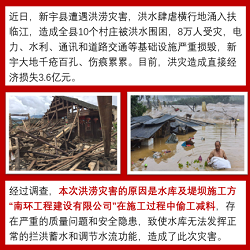 |  |  | 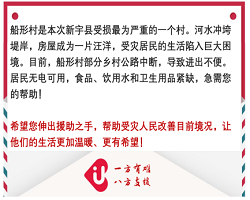 |
| 研究5a (火灾情境) | 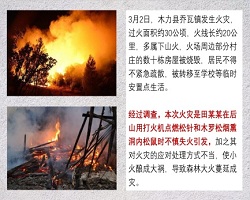 |  | 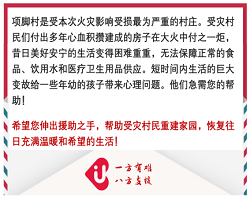 | 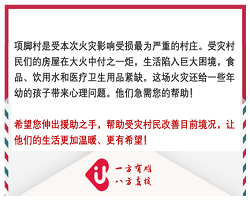 |
| 研究5b (疾病帮扶 情境) | 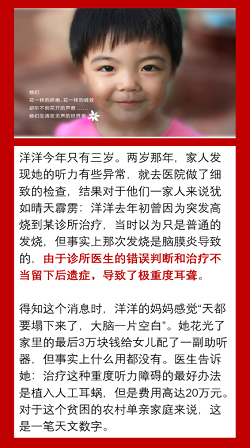 | 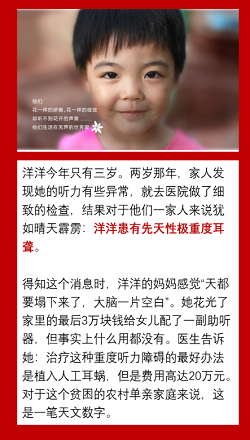 |  |  |
| 研究编号 (实验情境) | 事件可控性操控 | 募捐信息类型操控 | ||
|---|---|---|---|---|
| 可控情境 | 不可控情境 | “恢复/重建”组 | “改善/提高”组 | |
| 研究5a (洪灾情境) |  |  |  |  |
| 研究5a (火灾情境) |  |  |  |  |
| 研究5b (疾病帮扶 情境) |  |  |  |  |
| [1] |
Aaker, J. L., & Lee, A. Y. (2001). “I” seek pleasures and “we” avoid pains: The role of self-regulatory goals in information processing and persuasion. Journal of Consumer Research, 28(1), 33-49.
doi: 10.1086/321946 URL |
| [2] |
Alicke, M. D. (2000). Culpable control and the psychology of blame. Psychological Bulletin, 126(4), 556-574.
pmid: 10900996 |
| [3] |
Ashraf, A. R., & Thongpapanl, N. T. (2015). Connecting with and converting shoppers into customers: Investigating the role of regulatory fit in the online customer’s decision- making process. Journal of Interactive Marketing, 32, 13-25.
doi: 10.1016/j.intmar.2015.09.004 URL |
| [4] | Bateson, J. E. G. (1985). Self-service consumer: An exploratory study. Journal of Retailing, 61(3), 49-76. |
| [5] | Batson, C. D., & Powell, A. A. (2003). Altruism and prosocial behavior. In T. Millon & M. J. Lerner (Eds.), Handbook of psychology: Personality and social psychology (pp. 463- 484). John Wiley & Sons, Inc. |
| [6] |
Baum, A., & Fleming, I. (1993). Implications of psychological research on stress and technological accidents. American Psychologist, 48(6), 665-672.
pmid: 8328731 |
| [7] |
Bhattacharjee, A., & Mogilner, C. (2014). Happiness from ordinary and extraordinary experiences. Journal of Consumer Research, 41(1), 1-17.
doi: 10.1086/674724 URL |
| [8] |
Cesario, J., Grant, H., & Higgins, E. T. (2004). Regulatory fit and persuasion: Transfer from “feeling right”. Journal of Personality and Social Psychology, 86(3), 388-404.
pmid: 15008644 |
| [9] |
Chang, C. T. (2011). Guilt appeals in cause-related marketing: The subversive roles of product type and donation magnitude. International Journal of Advertising, 30(4), 587-616.
doi: 10.2501/IJA-30-4-587-616 URL |
| [10] |
Chang, C. T., & Lee, Y. K. (2009). Framing charity advertising: Influences of message framing, image valence, and temporal framing on a charitable appeal. Journal of Applied Social Psychology, 39(12), 2910-2935.
doi: 10.1111/(ISSN)1559-1816 URL |
| [11] | Cohen, J. (Eds). (1988). Statistical power analysis for the behavioral sciences(2nd ed.). Routledge. |
| [12] | Cohen, J. B., Pham, M. T., & Andrade, E. B. (2008). The nature and role of affect in consumer behavior. In C. P. Haugtvedt, P. Herr, & F. R. Kardes (Eds.), Handbook of consumer psychology (pp. 297-348). Erlbaum. |
| [13] | Erlandsson, A., Nilsson, A., & Västfjäll, D. (2018). Attitudes and donation behavior when reading positive and negative charity appeals. Journal of Nonprofit & Public Sector Marketing, 30(8), 1-31. |
| [14] |
Faul, F., Erdfelder, E., Lang, A.-G., & Buchner, A. (2007). G*Power 3: A flexible statistical power analysis program for the social, behavioral, and biomedical sciences. Behavior Research Methods, 39(2), 175-191.
doi: 10.3758/bf03193146 pmid: 17695343 |
| [15] |
Feiler, D. C., Tost, L. P., & Grant, A. M. (2012). Mixed reasons, missed givings: The costs of blending egoistic and altruistic reasons in donation requests. Journal of Experimental Social Psychology, 48(6), 1322-1328.
doi: 10.1016/j.jesp.2012.05.014 URL |
| [16] |
Fisher, R. J., Vandenbosch, M., & Antia, K. D. (2008). An empathy-helping perspective on consumers’ responses to fund-raising appeals. Journal of Consumer Research, 35(3), 519-531.
doi: 10.1086/586909 URL |
| [17] |
Friedrich, J., & McGuire, A. (2010). Individual differences in reasoning style as a moderator of the identifiable victim effect. Social Influence, 5(3), 182-201.
doi: 10.1080/15534511003707352 URL |
| [18] |
Higgins, E. T. (1997). Beyond pleasure and pain. American Psychologist, 52(12), 1280-1300.
doi: 10.1037//0003-066x.52.12.1280 pmid: 9414606 |
| [19] |
Higgins, E. T., Friedman, R. S., Harlow, R. E., Idson, L. C., Ayduk, O. N., & Taylor, A. (2001). Achievement orientations from subjective histories of success: Promotion pride versus prevention pride. European Journal of Social Psychology, 31(1), 3-23.
doi: 10.1002/(ISSN)1099-0992 URL |
| [20] |
Hildebrand, D., DeMotta, Y., Sen, S., & Valenzuela, A. (2017). Consumer responses to corporate social responsibility (CSR) contribution type. Journal of Consumer Research, 44(4), 738-758.
doi: 10.1093/jcr/ucx063 URL |
| [21] |
Huang, Y. H., Jia, Y. L., & Robert, S. W. J. (2017). The effects of physical distance from a brand extension on the impact of brand-extension fit. Psychology & Marketing, 34(1), 59-69.
doi: 10.1002/mar.20973 URL |
| [22] |
Jain, S. P., Lindsey, C., Agrawal, N., & Maheswaran, D. (2007). For better or for worse? Valenced comparative frames and regulatory focus. Journal of Consumer Research, 34(1), 57-65.
doi: 10.1086/513046 URL |
| [23] | Kahneman, D., Knetsch, J. L. & Thaler, R. H. (1991). The endowment effect, loss aversion, and status quo bias. Journal of Economic Perspectives, 5(1), 193-206. |
| [24] |
Kahneman, D., & Tversky, A. (1979). Prospect theory: An analysis of decision under risk. Econometrica, 47(2), 263-291.
doi: 10.2307/1914185 URL |
| [25] |
Kay, A. C., Whitson, J. A., Gaucher, D., & Galinsky, A. D. (2009). Compensatory control: Achieving order through the mind, our institutions, and the heavens. Current Directions in Psychological Science, 18(5), 264-268.
doi: 10.1111/j.1467-8721.2009.01649.x URL |
| [26] |
Kidwell, B., Farmer, A., & Hardesty, D. M. (2013). Getting liberals and conservatives to go green: Political ideology and congruent appeals. Journal of Consumer Research, 40(2), 350-367.
doi: 10.1086/670610 URL |
| [27] |
Kulow, K., & Kramer, T. (2016). In pursuit of good karma: When charitable appeals to do right go wrong. Journal of Consumer Research, 43(2), 334-353.
doi: 10.1093/jcr/ucw018 URL |
| [28] |
Lavery, J. F., & Valerie, A. C. (1996). Causal attributions, coping strategies, and adjustment to breast cancer. Cancer Nursing, 19(1), 20-28.
pmid: 8904383 |
| [29] |
Leys, C., Ley, C., Klein, O., Bernard, P., & Licata, L. (2013). Detecting outliers: Do not use standard deviation around the mean, use absolute deviation around the median. Journal of Experimental Social Psychology, 49(4), 764-766.
doi: 10.1016/j.jesp.2013.03.013 URL |
| [30] | Liu, W. M. (2019). Having power, donating more time? The effect of donors’ power on their charitable donation intention of time and the underlying mechanisms. Nankai Business Review, 22(2), 23-32. |
| [柳武妹. (2019). 权力越高越倾向于捐赠时间吗: 慈善营销中捐赠者的权力对其时间捐赠意愿的影响及机制研究. 南开管理评论, 22(2), 23-32.] | |
| [31] |
Lockwood, P., Jordan, C. H., & Kunda, Z. (2002). Motivation by positive or negative role models: Regulatory focus determines who will best inspire us. Journal of Personality and Social Psychology, 83(4), 854-864.
pmid: 12374440 |
| [32] | McGuire, W. (1969). The Nature of attitudes and attitude change. In C. Lindezy & E. Aronson (Eds.), Handbook of social psychology (2nd ed, pp. 136-314). Addison-Wesley. |
| [33] |
Moran, N., & Bagchi, R. (2019). The power of emotional benefits: Examining the role of benefit focus on donation behavior. Journal of Advertising, 48(3), 1-8.
doi: 10.1080/00913367.2018.1556138 URL |
| [34] |
Park, K., & Lee, S. S. (2015). The role of beneficiaries’ group identity in determining successful appeal strategies for charitable giving. Psychology & Marketing, 32(12), 1117-1132.
doi: 10.1002/mar.20852 URL |
| [35] |
Ran, Y. X., Niu, Y. X., & Chen, S. Y. (2021). “More” is less: Why multiple payment mechanism impairs individual donation. Acta Psychologica Sinica, 53(4), 413-430.
doi: 10.3724/SP.J.1041.2021.00413 |
|
[冉雅璇, 牛熠欣, 陈斯允. (2021). “多”反而少: 元认知推断视角下支付渠道数量对个体捐赠的影响. 心理学报, 53(4), 413-430.]
doi: 10.3724/SP.J.1041.2021.00413 |
|
| [36] | Rothman, A. J., Desmarais, K. J., & Lenne, R. L. (2019). Moving from research on message framing to principles of message matching: The use of gain- and loss-framed messages to promote healthy behavior. Advances in Motivation Science, 7, 43-73. |
| [37] |
Ryoo, Y., Sung, Y., & Chechelnytska, I. (2020). What makes materialistic consumers more ethical? Self-benefit vs. other-benefit appeals. Journal of Business Research, 110, 173-183.
doi: 10.1016/j.jbusres.2020.01.019 URL |
| [38] |
Savary, J., Goldsmith, K., & Dhar, R. (2014). Giving against the odds: When tempting alternatives increase willingness to donate. Journal of Marketing Research, 52(1), 27-38.
doi: 10.1509/jmr.13.0244 URL |
| [39] |
Small, D. A., Loewenstein, G., & Slovic, P. (2007). Sympathy and callousness: The impact of deliberative thought on donations to identifiable and statistical victims. Organizational Behavior and Human Decision Processes, 102(2), 143-153.
doi: 10.1016/j.obhdp.2006.01.005 URL |
| [40] |
Smith, I. H., Aquino, K., Koleva, S., & Graham, J. (2014). The moral ties that bind... even to out-groups: The interactive effect of moral identity and the binding moral foundations. Psychological Science, 25(8), 1554-1562.
doi: 10.1177/0956797614534450 URL |
| [41] |
Steiger, J. H. (2004). Beyond the F test: Effect size confidence intervals and tests of close fit in the analysis of variance and contrast analysis. Psychological Methods, 9(2), 164-182.
doi: 10.1037/1082-989X.9.2.164 pmid: 15137887 |
| [42] | Swanson, S. R., & Hsu, M. K. (2011). The effect of recovery locus attributions and service failure severity on word- of-mouth and repurchase behaviors in the hospitality industry. Journal of Hospitality & Tourism Research, 35(4), 511-529. |
| [43] |
Van Boven, L., & Gilovich, T. (2003). To do or to have? That is the question. Journal of Personality and Social Psychology, 85(6), 1193-1202.
doi: 10.1037/0022-3514.85.6.1193 pmid: 14674824 |
| [44] |
Vanhamme, J., Lindgreen, A., Reast, J., & Van Popering, N. (2012). To do well by doing good: Improving corporate image through cause-related marketing. Journal of Business Ethics, 109(3), 259-274.
doi: 10.1007/s10551-011-1134-0 URL |
| [45] |
Wang, J., & Lee, A. Y. (2006). The role of regulatory focus in preference construction. Journal of Marketing Research, 43(1), 28-38.
doi: 10.1509/jmkr.43.1.28 URL |
| [46] | Wang. J., Song. Q. Y., Xu. Y. P., Jia. B. B., & Hu. C. P. (2019). Calculating confidence intervals of Cohen’s d and Eta- squared: A practical primer. Psychology: Techniques and Applications, 7(5), 284-296. |
| [王珺, 宋琼雅, 许岳培, 贾彬彬, 胡传鹏. (2019). 效应量置信区间的原理及其实现. 心理技术与应用, 7(5), 284-296.] | |
| [47] | White, K., & Peloza, J. (2009). Self-benefit versus other- benefit marketing appeals: Their effectiveness in generating charitable support. Journal of Marketing, 73(4), 109-124. |
| [48] |
Whitson, J. A., & Galinsky, A. D. (2008). Lacking control increases illusory pattern perception. Science, 322(5898), 115-117.
doi: 10.1126/science.1159845 pmid: 18832647 |
| [49] |
Winterich, K., Mittal, V., & Aquino, K. (2013). When does recognition increase charitable behavior? Toward a moral identity-based model. Journal of Marketing, 77(3), 121-134.
doi: 10.1509/jm.11.0477 URL |
| [50] |
Winterich, K. P., & Zhang, Y. (2014). Accepting inequality deters responsibility: How power distance decreases charitable behavior. Journal of Consumer Research, 41(2), 274-293.
doi: 10.1086/675927 URL |
| [51] |
Yang, W. Q., Li, Q., Guo, M. Y., Fan, Q., & He, Y. L. (2017). The effects of power on human behavior: The perspective of regulatory focus. Acta Psychologica Sinica, 49(3), 404-415.
doi: 10.3724/SP.J.1041.2017.00404 |
| [杨文琪, 李强, 郭名扬, 范谦, 何伊丽. (2017). 权力感对个体的影响:调节定向的视角. 心理学报, 49(3), 404-415.] | |
| [52] |
Zagefka, H., & James, T. (2015). The psychology of charitable donations to disaster victims and beyond: The psychology of charitable donations. Social Issues and Policy Review, 9(1), 155-192.
doi: 10.1111/sipr.2015.9.issue-1 URL |
| [53] |
Zheng, L., Zhu, Y., & Jiang, R. (2019). The mediating role of moral elevation in cause-related marketing: A moral psychological perspective. Journal of Business Ethics, 156(2), 439-454.
doi: 10.1007/s10551-017-3614-3 |
| [1] | 樊亚凤, 蒋晶, 崔稳权. 网络公益平台默认选项设置对个人捐赠意愿的影响及作用机制[J]. 心理学报, 2019, 51(4): 415-427. |
| [2] | 耿晓伟, 姜宏艺. 调节定向和调节匹配对情感预测中 影响偏差的影响[J]. 心理学报, 2017, 49(12): 1537-1547. |
| [3] | 段锦云;周冉;陆文娟;李晶;朱宜超. 不同反应线索条件下调节匹配对建议采纳的影响[J]. 心理学报, 2013, 45(1): 104-113. |
| [4] | 汪玲,林晖芸,逄晓鸣. 特质性与情境性调节定向匹配效应的一致性[J]. 心理学报, 2011, 43(05): 553-560. |
| 阅读次数 | ||||||
|
全文 |
|
|||||
|
摘要 |
|
|||||